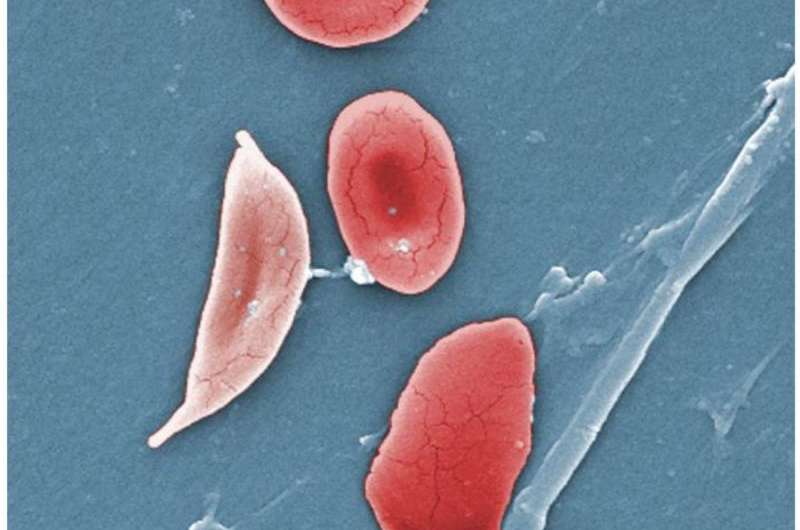This article has been reviewed according to Science X's editorial process and policies. Editors have highlighted the following attributes while ensuring the content's credibility:
fact-checked
peer-reviewed publication
trusted source
proofread
New small molecule could treat sickle cell disease in adults that don't respond to hydroxyurea, alone

Sickle cell disease, while rare, is the most common inherited blood disorder and affects over 100,000 people in the United States, more than 90% of whom are Black according to the Centers for Disease Control and Prevention. Although a medication called hydroxyurea can alleviate pain and lower the number of hospital visits, not all adults respond well to this treatment.
Researchers at Boston Medical Center (BMC) discovered a new small molecule that could lead to less sickled red blood cells and improved symptoms. The findings, published in Science Advances on July 31, provide proof of principle for developing more effective therapeutics.
"We've uncovered a promising approach that can offer hope to patients with sickle cell disease who have not responded to traditional treatments," says Shuaiying Cui, Ph.D., senior author on the paper and researcher at BMC's Center of Excellence in Sickle Cell Disease.
In sickle cell disease, red blood cells become "sickle" or crescent-shaped due to a genetic mutation affecting hemoglobin—a protein that carries oxygen from the lungs to other tissues. The mutation makes hemoglobin molecules stick together, blocking blood flow and leading to episodes of severe pain in patients.
However, fetal hemoglobin, which people usually stop making after birth, can reduce the number of sickled red blood cells. Hydroxyurea works by boosting fetal hemoglobin but can cause toxicity and does not help everyone.
The researchers in this study tested the effects of a small molecule targeting the peroxisome proliferator-activated receptor gamma coactivator 1- α (PGC-1 α), a protein found in fat tissue that plays a role in the maturation and survival of red blood cells, on fetal hemoglobin production and sickled cells.
The team found that the molecule, SR-18292, increases fetal hemoglobin production in human blood stem cells and leads to fewer misshapen red blood cells in mice with sickle cell disease. This suggests that SR-18292 can improve sickle cell disease pathology on its own. When combined with hydroxyurea, though, SR-18292 had an even larger effect on fetal hemoglobin production.
"Our research shows that combining a small molecule with hydroxyurea enhances the production of fetal hemoglobin through different mechanisms. This could provide a vital new treatment option for sickle cell disease patients who don't respond well to hydroxyurea alone," says Cui, an associate professor of hematology and medical oncology at Boston University Chobanian & Avedisian School of Medicine.
To determine if SR-18292 affects genes that control the production of fetal hemoglobin, the researchers did single-cell RNA-sequencing in human blood stem cells treated with the molecule.
The team discovered many genes with differing expressions after treatment with SR-18292, including downregulation of BCL11A, which normally represses the production of fetal hemoglobin and is the gene targeted by the first CRISPR editing therapy for sickle cell disease.
Therapies approved by the FDA recently for sickle cell disease and being offered to patients at BMC are costly and cannot yet be scaled to treat patients across the globe due to the complexity of the procedures. Cui hopes that this study is the first step towards developing a therapy that can treat patients in under-resourced communities.
"This breakthrough represents a significant step forward in BMC's quest for more effective therapies to treat sickle cell disease for all patients. Someday we hope that our drug can be applied to patients across the globe who might not have access to existing gene therapies for the condition," says Cui.
More information: Yanan Sun et al, PGC-1α Agonism Induces Fetal Hemoglobin and Exerts Anti-Sickling Effects in Sickle Cell Disease, Science Advances (2024). DOI: 10.1126/sciadv.adn8750. www.science.org/doi/10.1126/sciadv.adn8750




















